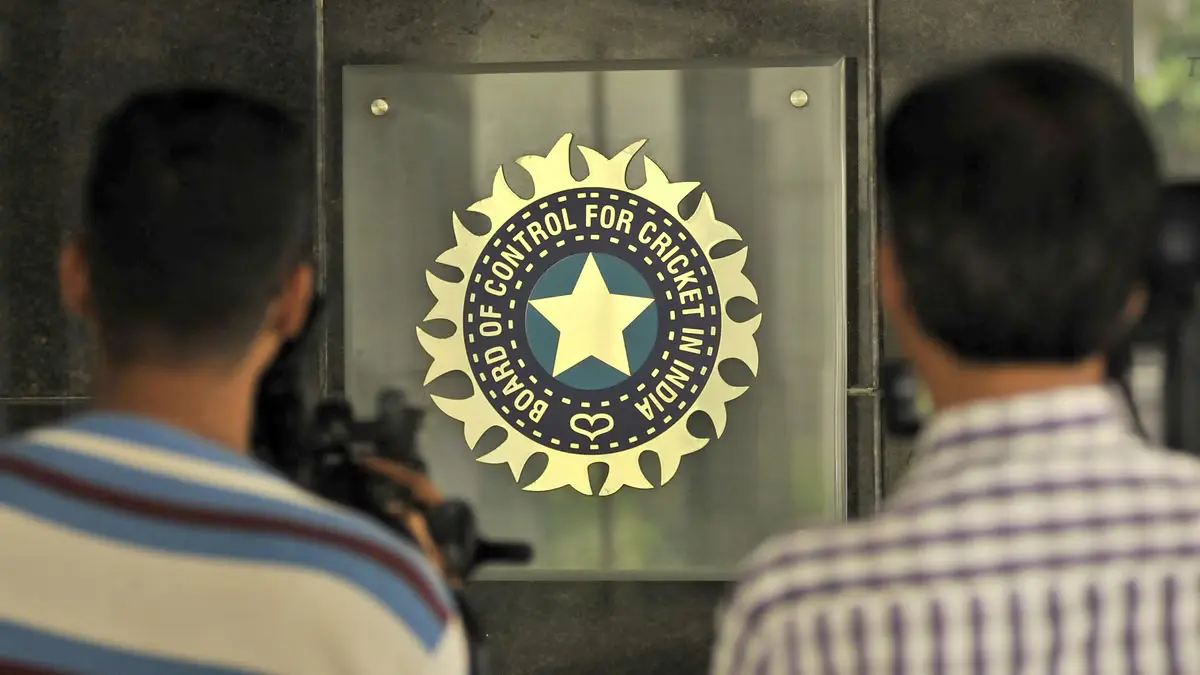Walking – In the realm of cricket, a sport steeped in tradition and fair play, the concept of walking holds significant importance. This act refers to a batsman voluntarily leaving the field upon being dismissed, without waiting for an umpire’s decision.
Walking in cricket has a rich history and has evolved over time as an embodiment of sportsmanship and ethical conduct.
It is seen as a way for players to uphold the spirit of the game and show respect for their opponents. By walking, a batsman acknowledges that they have been legitimately dismissed and accepts the decision without any dispute.
However, controversies and debates have arisen regarding its application in modern-day cricket. Some argue that walking should be mandatory and that players who do not walk are going against the principles of fair play.
They believe that walking enhances the integrity of the game and sets a positive example for younger players.
On the other hand, there are those who believe that walking should be a personal choice and not enforced upon players.
They argue that relying solely on the umpire’s decision is part of the game and that players should not be judged for waiting for the umpire’s call.
They also point out that the introduction of technology, such as the Decision Review System (DRS), has made it easier to detect and rectify incorrect decisions.
This article explores the concept of walking, its historical development, its significance in promoting fair play, and the differing perspectives surrounding it.
It delves into the arguments for and against walking in cricket and examines how the sport has adapted to the changing times.
Ultimately, it highlights the importance of sportsmanship and ethical conduct in cricket and encourages a respectful and fair approach to the game.
- Walking in cricket refers to a batsman voluntarily leaving the field upon being dismissed, without waiting for an umpire's decision.
- Walking is seen as a way for players to uphold the spirit of the game and show respect for their opponents.
- Walking demonstrates integrity and upholds the principles of honesty and fair play.
- While not mandatory, walking ensures equal opportunities for both teams and sets a positive example for younger players.
The Concept of Walking in Cricket
The concept of walking in cricket refers to the voluntary act of a batsman acknowledging that they are out and leaving the field without waiting for the umpire’s decision. Walking has long been a subject of ethical dilemma and sportsmanship debate in the game.
Walking is rooted in the spirit of fair play and good sportsmanship. By voluntarily accepting their dismissal, a batsman demonstrates integrity and upholds the principles of honesty and respect for their opponents.
However, it is important to note that walking is not mandatory according to the laws of cricket. The umpire’s decision is final, and players have the right to wait for it before leaving the field.
The practice of walking has become less common in modern-day cricket due to various factors. Some argue that professional cricket places greater emphasis on winning at all costs rather than fair play, leading players to prioritize personal achievements over sportsmanship.
Others believe that with advancements in technology such as ball-tracking systems and hot spot cameras, relying solely on umpires’ decisions ensures accuracy and fairness.
History and Evolution of Walking in Cricket
Originating in the late 19th century, the practice of umpires signaling a batsman’s dismissal by raising their finger gradually evolved into a universally recognized gesture in the sport.
Walking, as it is commonly known in cricket, refers to a voluntary act by a batsman who acknowledges that they are out and leaves the field without waiting for the umpire’s decision. This act is considered an important aspect of sportsmanship and fair play in the game.
However, with advancements in technology, particularly the introduction of television replays and third umpires, there has been a significant impact on the role of walking in cricket.
The availability of multiple camera angles and slow-motion replays has allowed for more accurate decision-making by umpires.
As a result, players have become more reliant on technology to determine their fate rather than relying on their own judgment or adhering to traditional values of honesty.
The role of technology has also raised questions about its impact on sportsmanship. Some argue that walking should no longer be expected from batsmen due to increased reliance on technology for decision-making.
Others argue that regardless of technological advancements, players should still uphold the spirit of fair play and display good sportsmanship by voluntarily leaving when they know they are out.
Importance and Fair Play in Walking
An assessment of the significance and adherence to fair play in the act of voluntarily leaving the field after being dismissed by the umpire remains a subject of ongoing debate.
Walking, or voluntarily leaving the field without waiting for an umpire’s decision, is seen as an ethical dilemma in cricket. It requires players to display sportsmanship and uphold fair play principles.
The importance and fair play in walking can be understood through the following points:
- Sportsmanship: Walking after being dismissed showcases respect for the game and its rules. It demonstrates a player’s integrity and honesty, which are essential aspects of sportsmanship.
- Leveling the playing field: Walking ensures that both teams have an equal opportunity to win. By accepting their dismissal without waiting for a decision from the umpire, players prevent any unfair advantage or disadvantage.
- Role model behavior: Walking sets an example for other players, especially younger ones, showing them that honesty and fair play should be prioritized over personal gains.
Controversies and Debates Surrounding Walking
Controversies and debates surrounding the act of voluntarily leaving the field after being dismissed by the umpire persist due to differing opinions on its ethical implications and impact on fair play in sports.
The concept of walking in cricket, where a batsman acknowledges his dismissal without waiting for an umpire’s decision, has long been debated among players, officials, and spectators.
The main point of contention revolves around the balance between ethics and gamesmanship. Some argue that walking is a display of honesty and integrity, aligning with the spirit of cricket.
They believe that it sets a positive example for young players and upholds the values of fairness and sportsmanship.
On the other hand, opponents argue that it is not within a player’s responsibility to make decisions about their own dismissals. They contend that relying solely on umpires’ decisions ensures consistency and impartiality.
The role of technology further complicates this issue. With advancements such as ball-tracking systems and instant replays, there is an increased reliance on technology to determine dismissals accurately.
Proponents argue that these technological aids eliminate any need for walking as they provide objective evidence for making correct decisions. However, critics contend that relying excessively on technology diminishes the human element of the game and undermines traditional norms.
To provide a comprehensive overview of various perspectives on this topic, we present a table summarizing key arguments:
| Arguments in Favor | Arguments Against |
|——————-|——————|
| Demonstrates honesty and integrity | Reliance on umpires ensures consistency |
| Upholds values of fairness and sportsmanship | Responsibility lies with umpires |
| Sets positive example for young players | Diminishes human element |
| Encourages self-regulation | Undermines traditional norms |
Modern-Day Perspectives on Walking in Cricket
Modern-day perspectives on the acknowledgment of dismissal without waiting for an umpire’s decision in the sport of cricket are shaped by evolving attitudes towards ethics, fair play, and the role of technology.
The concept of ‘walking’ in cricket refers to a batsman voluntarily leaving the crease after being dismissed without waiting for the umpire’s decision.
While walking is traditionally seen as a display of good sportsmanship and ethical behavior, its practice has become less common in modern cricket due to several factors.
Changing attitudes: In recent years, there has been a shift towards a more competitive mindset in cricket, where every advantage is sought to win matches. This has led some players to prioritize their team’s success over personal integrity.
Ethical considerations: Walking raises questions about fairness and adherence to rules. Some argue that it is not fair for a batsman to make his own decisions regarding dismissals when there are officials appointed to do so.
Role of technology: The introduction of technologies such as ball-tracking systems and ultra-edge has made it easier for umpires to make accurate decisions. Consequently, players may feel more inclined to rely on these technologies rather than making their own judgments.
Conclusion
Walking in cricket is a concept that has evolved over time and holds great importance in maintaining fair play. It refers to a batsman voluntarily leaving the field after being dismissed, without waiting for the umpire’s decision.
While walking was once considered an integral part of the game, controversies and debates have arisen surrounding its practice.
Today, opinions on walking vary, with some players valuing it as a display of sportsmanship, while others see it as unnecessary.
Some argue that waiting for the umpire’s decision is the correct approach, as it ensures that every decision is made objectively and without bias. On the other hand, proponents of walking believe that it shows respect for the game and the spirit of fair play.
In recent years, instances of players not walking when they know they are out have sparked heated discussions. Critics argue that this behavior goes against the spirit of the game and sets a bad example for younger players.
However, defenders of not walking argue that players should not be expected to make the umpire’s job easier, and that it is the umpire’s responsibility to make the correct decision.
In conclusion, the concept of walking in cricket remains a subject of contention and discussion among players and fans alike. While some view it as an essential aspect of fair play, others believe that it is unnecessary in the modern game.
Ultimately, the decision to walk or not is a personal choice that each player must make, taking into account their own values and the expectations of the game.
Frequently Asked Questions
How Is the Concept of 'Walking' Different From Other Sports in Cricket?
The concept of 'walking' in cricket differs from other sports due to its unique ethical implications and cultural significance. This practice involves a batsman voluntarily leaving the field when they believe they are out, regardless of the umpire's decision.
Are There Any Famous Incidents of Walking in Cricket History?
Controversial incidents of walking in cricket have had a significant impact on the spirit of the game. One notable incident involved Adam Gilchrist, who chose to walk despite being given not out. This decision sparked debates about sportsmanship and fair play in cricket.
What Role Does Umpiring Play in the Practice of Walking in Cricket?
The role of umpires in cricket is crucial in upholding fair play. They are responsible for making decisions on whether a batsman is out or not. The practice of walking relies on the umpire's judgment and the honesty of players.
Has the Use of Technology, Such as DRS, Affected the Tradition of Walking in Cricket?
The use of technology, such as DRS, has had a significant impact on the tradition of walking in cricket. The controversy surrounding the effect of DRS on fair play raises questions about its influence on the integrity of the game.
Are There Any Alternative Approaches to Fair Play in Cricket, Apart From Walking?
Alternative approaches to fair play in cricket, apart from walking, are an area of interest due to their potential psychological impact on players and the ethical considerations they raise. Such approaches aim to balance fairness with the use of technology in the sport.











